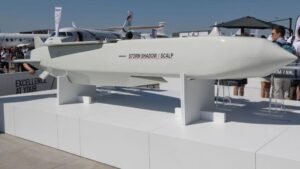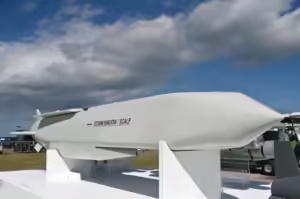“Ukraine Strikes Russia with Storm Shadow Missiles: Escalation in the Conflict and Global Reactions”
Ukraine Uses Storm Shadow Missiles in Russia Amid Escalating Tensions
Ukraine has reportedly fired British-made Storm Shadow missiles into Russian territory, marking a significant escalation in the ongoing conflict. This development follows Ukraine’s use of U.S.-made long-range missiles just a day earlier. These events have drawn international attention as NATO countries continue to support Ukraine with advanced weaponry, while Russia issues stern warnings of retaliation.
Storm Shadow Missile Strikes in Kursk
According to British media and Russian war correspondents, the missiles targeted the Kursk region, located near Ukraine’s border. Telegram channels shared videos capturing at least 14 explosions, accompanied by the distinct sound of incoming missiles. Footage from residential areas showed plumes of black smoke rising in the distance. Reports also indicated that missile fragments were found in Kursk, further validating the claims.
The UK government has refrained from commenting on these operational details. However, Britain’s previous stance allowed Ukraine to use Storm Shadow missiles strictly within its borders. Recent developments suggest that London has been advocating for their use in strikes on Russian territory, a move likely influenced by ongoing coordination with the U.S.

U.S. Support: A Game-Changer
On Tuesday, Ukraine employed U.S.-supplied long-range weapons to strike Russian targets, with the Biden administration permitting their use in the Kursk region. This policy marks a significant shift in U.S. military aid. In tandem, Washington announced a $275 million aid package, which includes ammunition for the HIMARS system, artillery shells, Javelin missiles, and other weaponry.
In another controversial move, President Joe Biden approved the use of antipersonnel landmines in Ukraine, aiming to hinder Russian advances in the east. This decision aligns with efforts to strengthen Ukraine’s position in potential peace negotiations, especially as U.S. domestic politics signal a possible shift in strategy with the upcoming presidency of Donald Trump, who has criticized military aid to Ukraine.
Russia’s Reaction and Retaliation Threats
Russia has responded strongly to these developments. President Vladimir Putin has reportedly lowered the threshold for deploying nuclear weapons in response to such attacks, though Washington stated there is no immediate need to alter its nuclear posture. Meanwhile, Chinese officials have called for restraint amid rising global concerns.
Russian Foreign Intelligence Chief Sergei Naryshkin warned that NATO countries aiding Ukraine in launching long-range missile strikes on Russian soil would face repercussions. Moscow views these actions as direct provocations designed to prolong the conflict.

The Broader Context
The war, which has lasted over 1,000 days, remains at a critical juncture. Nearly 20% of Ukrainian territory is under Russian control, and North Korean troops have reportedly been deployed in the Kursk region, highlighting the international dimensions of the conflict.
Reporting from Kyiv, analysts suggest that the U.S.’s approval of landmines is a strategic move to slow Russian progress, potentially improving Ukraine’s leverage in peace talks. The Biden administration appears intent on strengthening Ukraine’s hand before the transition of power in the U.S., as Trump has vowed to end the war quickly if he assumes office.
Future Implications
The use of advanced Western weapons by Ukraine signals growing international stakes in the conflict. While these actions aim to bolster Ukraine’s defenses, they also risk escalating the war further. With NATO’s continued support and Russia’s warnings of retaliation, the conflict is poised to remain a focal point of global attention.
This complex situation underscores the challenges of achieving peace, as both sides prepare for potential negotiations under vastly different conditions. For Ukraine, the goal is to reclaim occupied territories, while Russia seeks to solidify its gains amidst mounting international pressure.
Conclusion
The firing of Storm Shadow missiles into Russia and the subsequent geopolitical responses reflect the deepening complexities of the Ukraine conflict. As the war evolves, the roles of NATO, the U.S., and other global players will remain critical in shaping its trajectory and eventual resolution.
This article aims to provide a comprehensive understanding of recent developments, emphasizing the importance of continued vigilance and dialogue to navigate this volatile crisis.
Related
Discover more from NewsPour
Subscribe to get the latest posts to your email.




Let your voice be heard! Share your thoughts and ignite discussions.